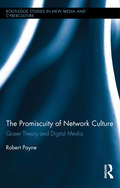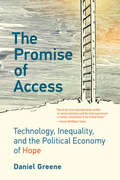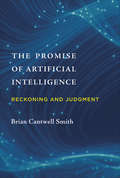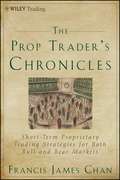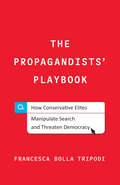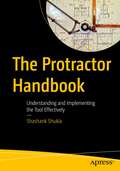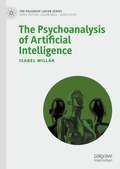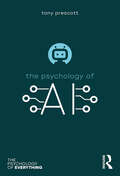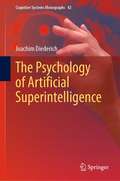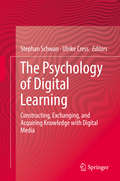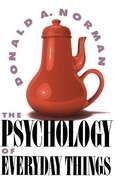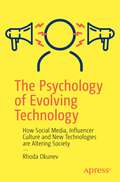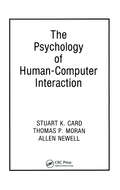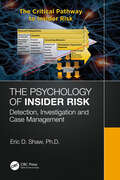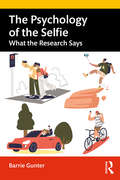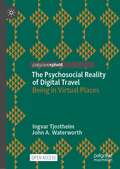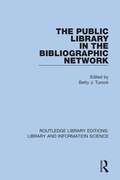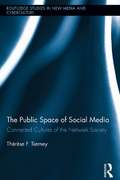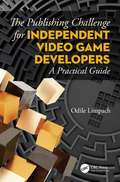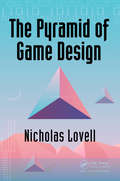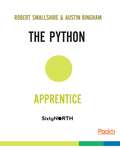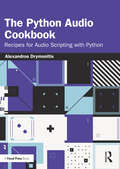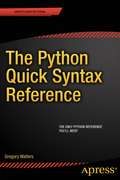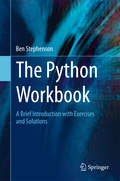- Table View
- List View
The Promiscuity of Network Culture: Queer Theory and Digital Media (Routledge Studies in New Media and Cyberculture)
by Robert PayneLiking, sharing, friending, going viral: what would it mean to recognize these current modes of media interaction as promiscuous? In a contemporary network culture characterized by a proliferation of new forms of intimate mediated sociality, this book argues that promiscuity is a new standard of user engagement. Intimate relations among media users and between users and their media are increasingly structured by an entrepreneurial logic and put to work for the economic interests of media corporations. But these multiple intimacies can also be understood as technologies of promiscuous desire serving both to liberalize mediated social connection and to contain it within normative frames of value. Payne brings crucial questions of gender, sexuality, intimacy, and attention back into conversation with recent thinking on network culture and social media, identifying the queer undercurrents of these current media dynamics.
The Promise of Access: Technology, Inequality, and the Political Economy of Hope
by Daniel GreeneWhy simple technological solutions to complex social issues continue to appeal to politicians and professionals who should (and often do) know better.Why do we keep trying to solve poverty with technology? What makes us feel that we need to learn to code--or else? In The Promise of Access, Daniel Greene argues that the problem of poverty became a problem of technology in order to manage the contradictions of a changing economy. Greene shows how the digital divide emerged as a policy problem and why simple technological solutions to complex social issues continue to appeal to politicians and professionals who should (and often do) know better.
The Promise of Artificial Intelligence: Reckoning and Judgment
by Brian Cantwell SmithAn argument that—despite dramatic advances in the field—artificial intelligence is nowhere near developing systems that are genuinely intelligent.In this provocative book, Brian Cantwell Smith argues that artificial intelligence is nowhere near developing systems that are genuinely intelligent. Second wave AI, machine learning, even visions of third-wave AI: none will lead to human-level intelligence and judgment, which have been honed over millennia. Recent advances in AI may be of epochal significance, but human intelligence is of a different order than even the most powerful calculative ability enabled by new computational capacities. Smith calls this AI ability “reckoning,” and argues that it does not lead to full human judgment—dispassionate, deliberative thought grounded in ethical commitment and responsible action.Taking judgment as the ultimate goal of intelligence, Smith examines the history of AI from its first-wave origins (“good old-fashioned AI,” or GOFAI) to such celebrated second-wave approaches as machine learning, paying particular attention to recent advances that have led to excitement, anxiety, and debate. He considers each AI technology's underlying assumptions, the conceptions of intelligence targeted at each stage, and the successes achieved so far. Smith unpacks the notion of intelligence itself—what sort humans have, and what sort AI aims at. Smith worries that, impressed by AI's reckoning prowess, we will shift our expectations of human intelligence. What we should do, he argues, is learn to use AI for the reckoning tasks at which it excels while we strengthen our commitment to judgment, ethics, and the world.
The Prop Trader's Chronicles
by Francis J. ChanA practical guide to profiting from the strategies of professional proprietary tradersToday's technology allows traders to make faster, more price-sensitive trades and to better read the flow of market information and transactions--opening the way to a wider variety of short-term trading strategies. The Prop Trader's Chronicles unveils these strategies and techniques, which have long been the province of proprietary trading firms and other professional stock traders.This reliable guide describes author Francis Chan's experience as a prop trader in an engaging narrative, but at the same time provides an in-depth explanation of strategies employed by proprietary traders utilizing direct access technologies, Level II quotes, time and sales feeds, and electronic communication networks. Along the way, you'll be introduced to a variety of strategies involved in the rapid day trading of stocks, including: scalping, rebate trading, and advanced reading of time and sales transactions to detect short-term swings. Chang also reveals how to use time and sales data as the modern-day equivalent of 'reading the tape.'Shows active independent traders how they can perform at a higher level by replicating the professional strategies of prop tradersOffers valuable insights on how traders can 'read the tape' and better detect short term market swingsDescribes a variety of prop trading strategies, from electronic scalping to statistical arbitrageThe Prop Trader's Chronicles provides a solid foundation for traders looking to improve their performance. With this book as your guide, you'll quickly discover what it really takes to make it in today's competitive markets.
The Propagandists' Playbook: How Conservative Elites Manipulate Search and Threaten Democracy
by Francesca Bolla TripodiAn examination of what algorithmic polarization means for society and how conservative elites use media literacy tactics to spread propagandaThe Propagandists&’ Playbook peels back the layers of the right-wing media manipulation machine to reveal why its strategies are so effective and pervasive, while also humanizing the people whose worldviews and media practices conservatism embodies. Based on interviews and ethnographic observations of two Republican groups over the course of the 2017 Virginia gubernatorial race—including the author&’s firsthand experience of the 2017 Unite the Right rally—the book considers how Google algorithms, YouTube playlists, pundits, and politicians can manipulate audiences, reaffirm beliefs, and expose audiences to more extremist ideas, blurring the lines between reality and fiction. Francesca Tripodi argues that conservatives who embody the Christian worldview give authoritative weight to original texts and interrogate the media using the same tools taught to them in Bible study—for example, using Google to &“fact check&” the news. The result of this practice, tied to conservative marketing tactics, is more than a reaffirmation of existing beliefs: it is a radicalization of content and a changing of narratives adopted by the media. Tripodi also demonstrates the pervasiveness of white supremacy in the conservative media ecosystem, as well as its mainstream appeal, scope, and spread.
The Protractor Handbook: Understanding and Implementing the Tool Effectively
by Shashank ShuklaLearn to quickly set up Protractor and dive into the amazing possibilities that this tool offers for automating browser interactions for a user for any Angular web application. Software testing is here to stay, and an integral part of this is test automation. Protractor is one of the most evolved test automation frameworks that every software testing professional working with an Angular application should know.You will to automate a vast range of actions that a user takes to interact with the browser. From a simple ‘click’ to more complex user actions such as frame switches, selecting from drop-downs, and file downloads using Protractor APIs for Angular-based websites. You will also learn about assertions, timeouts, waits, parallel testing frameworks that are available, and the general pros and cons you should be aware of. With over 150 working code samples demonstrating various test scenarios that you require in your day-to-day automation testing, and examples that may be given in interviews, this book will be your practical handbook to all the key Protractor API implementations. What You'll Learn Set up and install Protractor efficientlyImplement Angular-specific locator strategiesAutomate Angular web pagesRun parallel execution using ProtractorExplore all the pros, cons and challenges you may face while using ProtractorUse specific notes around each API to ensure optimum usage and avoid common mistakes Who This Book Is For Ideal for test engineers who have a basic understanding of test automation with Selenium, developers who want to implement this testing tool for internal testing, Test Managers/IT Project Managers who want to get some general understanding of this tool and its advantages, and students who want to pursue career in test automation.
The Psychoanalysis of Artificial Intelligence (The Palgrave Lacan Series)
by Isabel MillarThis book examines the crucial role of psychoanalysis in understanding what AI means for us as speaking, sexed subjects. Drawing on Lacanian theory and recent clinical developments it explores what philosophy and critical theory of AI has hitherto neglected: enjoyment. Through the reconceptualization of Intelligence, the Artificial Object and the Sexual Abyss the book outlines the Sexbot as a figure who exists on the boundary of psychoanalysis and AI. Through this figure and the medium of film, the author subverts Kant’s three Enlightenment questions and guides readers to transition from asking 'Does it think?' to 'Can it enjoy?' The book will appeal in particular to students and scholars of psychoanalysis, philosophy, film and media studies, critical theory, feminist theory and AI research.
The Psychology of Artificial Intelligence (The Psychology of Everything)
by Tony PrescottWhat is Artificial Intelligence? How will AI impact society? Is AI more powerful than human intelligence?The Psychology of AI explores all aspects of the psychology–AI relationship, asking how closely AI can resemble humans, and whether this means they could have some form of self-awareness. It considers how AI systems have been modelled on human intelligence and the similarities between brains and computers, along with the current limitations of AI and how these could be overcome in the future. It also looks at how people interact with AI in their everyday lives, exploring some of the ethical and societal risks, such as bias in AI algorithms, and the consequences for our long-term future if AIs do surpass humans in important ways.As AI continues to break new milestones, The Psychology of AI answers key questions about what it really means to be human, and how AI will impact our lives in every way, now and into the future.
The Psychology of Artificial Superintelligence (Cognitive Systems Monographs #42)
by Joachim DiederichThis book explores the psychological impact of advanced forms of artificial intelligence. How will it be to live with a superior intelligence? How will the exposure to highly developed artificial intelligence (AI) systems change human well-being? With a review of recent advancements in brain–computer interfaces, military AI, Explainable AI (XAI) and digital clones as a foundation, the experience of living with a hyperintelligence is discussed from the viewpoint of a clinical psychologist. The theory of universal solicitation is introduced, i.e. the demand character of a technology that wants to be used in all aspects of life. With a focus on human experience, and to a lesser extent on technology, the book is written for a general readership with an interest in psychology, technology and the future of our human condition. With its unique focus on psychological topics, the book offers contributions to a discussion on the future of human life beyond purely technological considerations.
The Psychology of Digital Learning
by Ulrike Cress Stephan SchwanThis book provides an overview of the state-of-the art of psychological research on learning and knowledge exchange with digital media, based on a comprehensive research program that was realized at the Leibniz-Institut f#65533;r Wissensmedien(IWM) during the last decade. The dramatic rise of new tools and technologies, including both hardware devices like smartphones, tablets, multitouch-tables, or stereoscopic screens as well as software environments like Google, Wikipedia, Facebook, Twitter or MOOCs - has fundamentally reshaped teaching, learning, and knowledge exchange. The authors describe an area of digital learning in light of these recent technological developments, specify the relevant theoretical approaches, summarize the main research results from the lab, and discuss their theoretical and practical implications.
The Psychology of Everyday Things
by Donald A. NormanEven the smartest among us can feel inept as we fail to figure our which light switch or oven burner to turn on, or whether to push, pull, or slide a door. The fault, argues this fascinating, ingenious—even liberating—book, lies not in ourselves, but in product design that ignores the needs of users and the principles of cognitive psychology. The problems range from ambiguous and hidden controls to arbitrary relationships between controls and functions, coupled with a lack of feedback or other assistance and unreasonable demands on memorization. The book presents examples aplenty—among them, the VCR, computer, and office telephone, all models of how not to design for people.But good, usable design is possible. The rules are simple: make things visible, exploit natural relationships that couple function and control, and make intelligent use of constraints. The goal: guide the user effortlessly to the right action on the right control at the right time. But the designer must care.
The Psychology of Evolving Technology: How Social Media, Influencer Culture and New Technologies are Altering Society
by Rhoda OkunevTechnological innovations have advanced at an incredible speed since the introduction of the computer that it has altered the fabric of our society. The possession of computers, smart-devices, along with social media, texting and video games, is now an intimate part of the structure of our culture. This book is a framework to start a conversation on how technology is changing our lifestyles and transforming our world. There is now an entire generation that has been using technology through the most delicate developmental time in their lives. This book presents how to look at the cognitive and psychosocial developmental stages and what are the age-appropriate milestones and factsheet of behaviors at different ages. It provides insight into the strength and vulnerable characteristics at each stage and the prevalence of some negative conditions in our society. You will gain a perspective of the encouraging and challenging aspects of computer learning, smart devices, and how to start and keep the conversation going from infancy to adulthood in order to keep and maintain your virtues and ways to circumvent unfavorable consequences. In short, The Psychology of Evolving Technology looks at how cutting-edge and revolutionary high technologies have disrupted our society through its many luxuries and conveniences and how it has altered the outlook of our values, privileges, and expectations. What You'll LearnDetermine what adjustments should be made to regulate new innovations to allow them to succeed See how development stages in a child now interact with technologyReview how social media and influencer culture are changing the way we see ourselves in society Who This Book Is For All readers curious about the effect of technology on individuals, growing children, and the fabric of society
The Psychology of Human-Computer Interaction
by Stuart K. Card, Thomas P. Moran and Allen NewellDefines the psychology of human-computer interaction, showing how to span the gap between science & application. Studies the behavior of users in interacting with computer systems.
The Psychology of Insider Risk: Detection, Investigation and Case Management
by Eric ShawClinical psychologist and former intelligence officer Eric D. Shaw brings over 30 years of psychological consultation experience to the national security community, corporate investigations and law enforcement to this work on insider risk. After a career in counterterrorism, Dr. Shaw spent the last 20 years concentrating on insiders—employees who commit espionage, sabotage, intellectual property theft, present risks of harm to self and others, and other workplace risks, especially those influenced by mental health conditions. Dr. Shaw is the author of the Critical Pathway to Insider Risk (CPIR) which addresses the characteristics, experiences and connections at-risk employees bring to our organizations, the stressors that trigger higher levels of risk, the concerning behaviors that signal this risk has increased and the action or inaction by organizations that escalate insider risk. The CPIR also examines what these employees look like when they have broken bad and the personal characteristics, resources and support that can mitigate these risks. Dr. Shaw also examines specific risk accelerators like subject disgruntlement, personality disorders and problematic organizational responses that can escalate the speed and intensity of insider risks. The investigative applications, strengths and weaknesses of the CPIR are also considered. This work also describes the behavioral science tools deployed in insider investigations, especially those designed to locate and understand persons at-risk and help organizations intervene to avoid escalation or manage potential damage. Case examples are drawn from intelligence community, corporate and law enforcement investigations. Specific insider cases where the use of behavioral science tools is described in detail include leaks, anonymous threats, erotomania, hacking, violence risk, mass destruction threats and espionage. The work closes with consideration of the many current and future challenges insider risk professionals face. These include the challenge of recognizing suicidal ideation as a gateway to other forms of insider risk, understanding when subject therapy will, and will not reduce risk, deciphering belief in conspiracy theory from significant extremist risk, appreciating insider threats to our elections and the unique challenges posed when the insider is a leader.
The Psychology of the Internet
by Patricia WallaceThis timely volume explores the psychological aspects of cyberspace, a virtual world in which people from around the globe are acting and interacting in many new, unusual, and occasionally alarming ways. Drawing on research in the social sciences, communications, business, and other fields, Patricia Wallace examines how the online environment can influence the way we behave, sometimes for the better, sometimes not. Our own online behavior then becomes part of the Internet's psychological environment for others, creating opportunities for shaping the way this new territory for human interaction is unfolding. Since the Internet--and our experience within it--is still young, we have a rare window of opportunity to influence the course of its development. With a new preface that incorporates many of the changes online and in the field since the hardcover edition was published, the paperback edition of The Psychology of the Internet includes the latest coverage of e-commerce, workplace surveillance and datamining, all areas of recent intense public concern. Patricia M. Wallace is Executive Director of the Center for Knowledge and Information Management at the Robert H. Smith School of Business, University of Maryland. She is author of an interactive psychology CD-ROM called PRISM and of the textbook Introduction to Psychology, Fourth Edition (with Jeffrey Goldstein). Dr. Wallace is also the principal investigator on grants from the Annenberg Projects/Corporation for Public Broadcasting dealing with language learning through CD-ROMs and the Internet.
The Psychology of the Selfie: What the Research Says
by Barrie GunterThe Psychology of the Selfie provides a comprehensive overview and analysis of research on the significance of selfies, offering insights into the topic from a psychological perspective and examining important issues such as body image, self-objectification, mental health and psychological benefits. Selfies are a worldwide phenomenon. Although dismissed by critics as a sign of self-absorbed narcissism, they are also a social currency that maintains and reinforces friendships, a feedback loop for self-identity affirmation, a promotional tool for gaining social influence, and a method for preserving memories of life events. In this book, Barrie Gunter expertly explores the psychological underpinnings of the contemporary global phenomenon of "selfies", from the historical roots and meteoric rise due to technical advancements, to the different personality types of selfie-takers, to social relationships, to group and personal identity. Looking at both the psychological nature and impact of selfies, this book reviews different psychological outcomes for selfie-takers, both positive and negative, and the growth in psychological and physical problems that can sometimes arise. Presenting a comprehensive analysis specifically of selfie behaviour, this book is an essential reference for students and researchers in communications and media, journalism, information studies, psychology and sociology, as well as anyone with a general interest in the phenomenon.
The Psychosocial Reality of Digital Travel: Being in Virtual Places
by Ingvar Tjostheim John A. WaterworthThis open access book takes a fresh look at the nature of the digital travel experience, at a time when more and more people are engaged in online social interaction, games, and other virtual experiences essentially involving online visits to other places. It examines whether these experiences can seem real to the virtual traveller and, if so, under what conditions and on what grounds. The book unpacks philosophical theories relevant to the feeling of being somewhere, emphasising the importance of perception and being-in-the-world. Notions of place are outlined, based on work in tourism studies, human geography, and other applied social fields, with an aim to investigate how and when different experiences of place arise for the traveller and how these relate to telepresence – the sense of being there in another place through digital media. Findings from recent empirical studies of digital travel are presented, including a survey from which the characteristics of “digital travellers” are identified. A review of selected interactive design trends and possibilities leads to the conclusion, which draws these strands together and looks to the future of this topical and expanding field.
The Public Library in the Bibliographic Network (Routledge Library Editions: Library and Information Science #69)
by Betty TurockThis book, first published in 1986, focuses on valuable information to all public library professionals who have questions about their participation in bibliographic networks. Contributors provide insights into both the benefits and the costs of networking by libraries of varying sizes and geographic locations. The actual uses of networks, their costs (including initial and ongoing expenses), and staffing needs are clearly explained.
The Public Space of Social Media: Connected Cultures of the Network Society (Routledge Studies in New Media and Cyberculture)
by Therese TierneySocial media is restructuring urban practices–through ad-hoc experimentation, commercial software development, and communities of participation. This book is the first to consider how practices contained within social media are situated within a larger genealogy of public space, including theories of communal identity, civitas and democracy, the fete, and self-expression. Through empirical research, the actual social practices of participants of networked publics are described and analyzed. Documenting how online counterpublics use the Internet to transmit classified photos, mobilize activists, and challenge the status quo, Tierney argues that online activities do not stop in online conversations; they are physically grounded through mobile GPS coordinates which are then transformed into activities in physical space—the street, the plaza, the places where people have traditionally gathered to demonstrate and express their opinions publicly.
The Publishing Challenge for Independent Video game Developers: A Practical Guide
by Odile LimpachProfessor Odile Limpach gives independent developers everything they need to succeed in the world of video game publishing. The Publishing Challenge for Independent Video Game Developers: A Practical Guide defines what game publishing means for the indie developer and offers a concise framework to tackle the decision of whether to self-publish or not. Furthermore, the text establishes a catalogue of current known publishers with some salient characteristics and offers a list of useful publishing tools. Along with showcasing testimonials from several young and seasoned developers on their experiences with publishing and partners and recommendations from renown experts of the industry, this book offers tools, platforms, and guides to game publishing. Key features: Provides a broad overview of the game publishing market Explores criteria for choosing between a publishing partner or self-publishing Offers case studies and testimonials from indie game developers and publishers about the process. Professor Odile Limpach teaches economics and entrepreneurship at the Cologne Game Lab, TH Köln (Technical University of Cologne). She is also co-founder of the Acceleration Program SpielFabrique 360° and works as a Strategic Consultant for games and serious game projects. Between 2007 and 2014, she was the managing director of the German entertainment software studio Ubisoft Blue Byte. Before, she was the managing director of Ubisoft GmbH. She graduated from business school Institut Commercial de Nancy in France and completed her MBA in the United States. Odile Limpach is also involved as a volunteer in the areas of vocational training and acts as a German partner for Games for Change Europe. Furthermore, she acts as an advisor (Conseiller du Commerce Extérieur) for the French Ministry for International Business Development.
The Pyramid of Game Design: Designing, Producing and Launching Service Games
by Nicholas LovellGame design is changing. The emergence of service games on PC, mobile and console has created new expectations amongst consumers and requires new techniques from game makers. <P><P>In The Pyramid of Game Design, Nicholas Lovell identifies and explains the frameworks and techniques you need to deliver fun, profitable games. Using examples of games ranging from modern free-to-play titles to the earliest arcade games, via PC strategy and traditional boxed titles, Lovell shows how game development has evolved, and provides game makers with the tools to evolve with it. <P><P>Lovell shows how service games require all the skills of product game development, and more. He provides a toolset for game makers of all varieties to create fun, profitable games. Filled with practical advice, memorable anecdotes and a wealth of game knowledge, the Pyramid of Game Design is a must-read for all game developers. <P><P>Key Features <li>Harness the Base, Retention and Superfan Layers to create a powerful Core Loop. <li>Design the player Session to keep players playing while being respectful of their time. <li>Accept that there are few fixed rules: just trade-offs with consequences. <li>Adopt Agile and Lean techniques to "learn what you need you learn" quickly. <li>Use analytics, paired with design skills and player feedback, to improve the fun, engagement and profitability of your games. <li>Adapt your marketing techniques to the reality of the service game era. <li>Consider the ethics of game design in a rapidly changing world.
The Python Apprentice
by Austin Bingham Robert SmallshireLearn the Python skills and culture you need to become a productive member of any Python project. About This Book • Taking a practical approach to studying Python • A clear appreciation of the sequence-oriented parts of Python • Emphasis on the way in which Python code is structured • Learn how to produce bug-free code by using testing tools Who This Book Is For The Python Apprentice is for anyone who wants to start building, creating and contributing towards a Python project. No previous knowledge of Python is required, although at least some familiarity with programming in another language is helpful. What You Will Learn • Learn the language of Python itself • Get a start on the Python standard library • Learn how to integrate 3rd party libraries • Develop libraries on your own • Become familiar with the basics of Python testing In Detail Experienced programmers want to know how to enhance their craft and we want to help them start as apprentices with Python. We know that before mastering Python you need to learn the culture and the tools to become a productive member of any Python project. Our goal with this book is to give you a practical and thorough introduction to Python programming, providing you with the insight and technical craftsmanship you need to be a productive member of any Python project. Python is a big language, and it's not our intention with this book to cover everything there is to know. We just want to make sure that you, as the developer, know the tools, basic idioms and of course the ins and outs of the language, the standard library and other modules to be able to jump into most projects. Style and approach We introduce topics gently and then revisit them on multiple occasions to add the depth required to support your progression as a Python developer. We've worked hard to structure the syllabus to avoid forward references. On only a few occasions do we require you to accept techniques on trust, before explaining them later; where we do, it's to deliberately establish good habits.
The Python Audio Cookbook: Recipes for Audio Scripting with Python
by Alexandros DrymonitisThe Python Audio Cookbook offers an introduction to Python for sound and multimedia applications, with chapters that cover writing your first Python programs, controlling Pyo with physical computing, and writing your own GUI, among many other topics. Guiding the reader through a variety of audio synthesis techniques, the book empowers readers to combine their projects with popular platforms, from the Arduino to Twitter, and state-of-the-art practices such as AI. The Python Audio Cookbook balances accessible explanations for theoretical concepts, including Python syntax, audio processing and machine learning, with practical applications. This book is an essential introductory guide to Python for sound and multimedia practitioners, as well as programmers interested in audio applications.
The Python Quick Syntax Reference
by Gregory WaltersThe Python Quick Syntax Reference is the "go to" book that contains an easy to read and useguide to Python programming and development. This condensed code and syntaxreference presents the Python language in a well-organized format designed tobe used time and again. You won't find jargon, bloated samples, case studies, or history of Hello Worldand computer theory in this handy reference. This Python syntax reference ispacked with useful information and is a must-have for any Python developer. What you'll learn Variables, strings, lists, dictionaries andconditional statements are and how to use them Some of the standard libraries and what they cando to help you How to write your own functions How to write your first Python program based onterminal Input and Output How to use the Python Interactive Shell How to use classes in your Python programs Who this book is for The Python Quick Syntax Reference is a great pocket reference guide for anyone wanting to program in Python, from the new user to the experienced programmer. Table of Contents Chapter 1: Hello Python Chapter 2: Variables Chapter 3: Operators Chapter 4: Strings Chapter 5: Conditional Statements and Loops Chapter 6: Data Structures Chapter 7: Keywords Chapter 8: Functions Chapter 9: Libraries Chapter 10: Classes
The Python Workbook: A Brief Introduction with Exercises and Solutions
by Ben StephensonWhile other textbooks devote their pages to explaining introductory programming concepts, The Python Workbook focuses exclusively on exercises, following the philosophy that computer programming is a skill best learned through experience and practice. Designed to support and encourage hands-on learning about programming, this student-friendly work contains 174 exercises, spanning a variety of academic disciplines and everyday situations. Solutions to selected exercises are also provided, supported by brief annotations that explain the technique used to solve the problem, or highlight specific points of Python syntax. No background knowledge is required to solve the exercises, beyond the material covered in a typical introductory Python programming course. Undergraduate students undergoing their first programming course and wishing to enhance their programming abilities will find the exercises and solutions provided in this book to be ideal for their needs.
